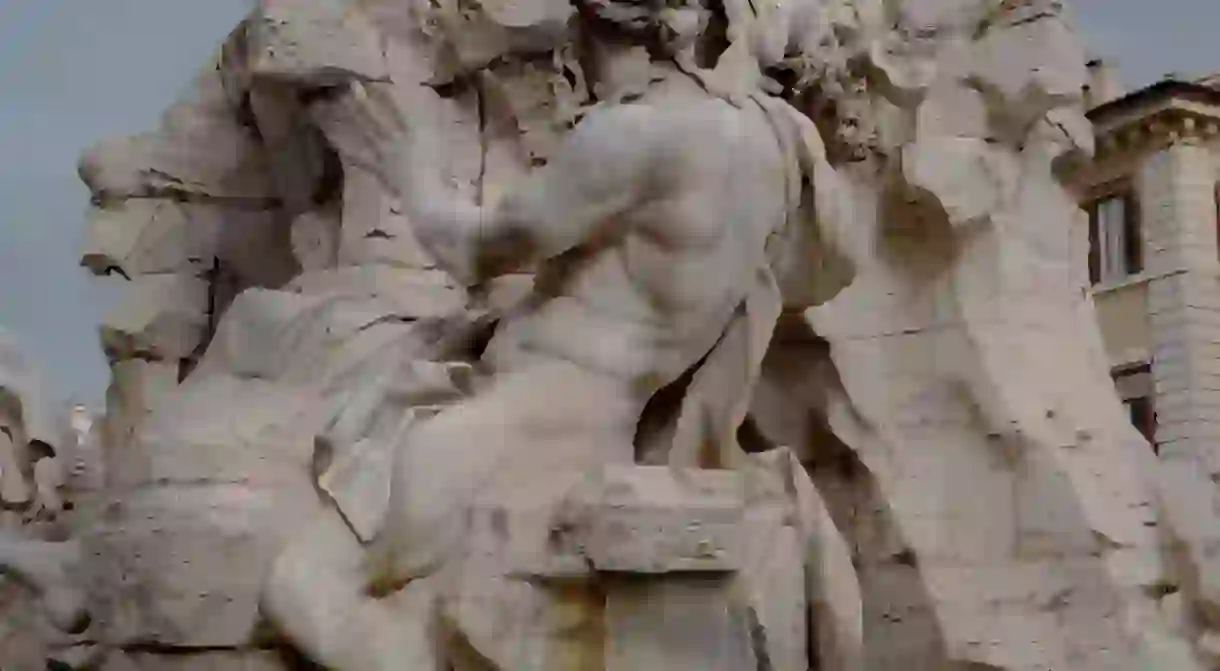Rome's Must-See Art Masterpieces

It would take a lifetime to soak in all of the culture and art that Rome has to offer, but there are some standout masterpieces that those who appreciate fine art ought to see. These 10 awe-inspiring works lie within museums, churches and palazzos around the city and cover different periods, mediums and styles. For must-see art lying within St. Peter’s Basilica and the Vatican Museums, check out 10 masterpieces you need to see in Vatican City; but for now, explore the 10 must-see art masterpieces in Rome.
Raphael's Frescoes
Museum

Bernini's Apollo and Daphne
Museum, Park

Sarcophagus of the Spouses
Historical Landmark

This 6th century B.C. terracotta Etruscan sarcophagus is one of the greatest artifacts to remain of the ancient civilization that preceded the Romans. Located within the National Etruscan Museum of Villa Giulia, this piece depicts a married couple reclining at a banquet together. Because the two figures are of equal proportion and pose, it also suggests that the Etruscan culture was quite egalitarian in terms of gender. The Etruscans were strongly focused on the afterlife and sought to ensure that the deceased were comfortable in their resting places, creating ornate painted tombs (such as in Tarquinia) and elaborate sarcophagi.
Caravaggio's Paintings in the Contarelli Chapel
Historical Landmark

Caravaggio is one of the most celebrated Baroque painters in Italian history; he was a radical innovator that painted dramatic scenes and expertly employed the chiaroscuro technique, strongly contrasting light and dark to create multidimensional works of art with a strong base in naturalism. His masterpieces are dotted around Rome, but the Contarelli Chapel in San Luigi dei Francesi Church is notable because it features three Caravaggio paintings together (a jackpot for lovers of his works). Painted between 1599-1600, the cycle of paintings represent the life of Matthew the Apostle: The Calling of St. Matthew, The Inspiration of St. Matthew and The Martyrdom of St. Matthew.
Borromini's Prospettiva
Historical Landmark

This optical illusion by Borromini is a real treat for the senses. The Baroque Prospective Gallery appears to be a long colonnade but is in fact much shorter than it appears. Only 9 meters long, it has a rising floor, descending ceiling and decreasing columns that work together to create this playful visual; even the hedges which lie in the back are made of stone. This unexpected gem is part of the Palazzo Spada, which houses the 17th century Spada family painting gallery, a small collection of works by artists such as Titan, Guercino and Gentileschi.
Michelangelo's Moses
Historical Landmark

Although the majority of Michelangelo’s most famous works in Rome reside in Vatican City, his stirring statue of Moses lies within the Basilica di San Pietro in Vincoli, next to the Monti neighborhood. Moses is the central figure of a tomb commissioned by Pope Julius II in the 16th century, and is notable because it depicts Moses with horns on his head (due to a mistranslation of Hebrew in the Bible, in which the words ‘rays of light’ were interpreted as ‘horns’).
Mosaics in Santa Maria in Trastevere
Historical Landmark

The Basilica of Santa Maria in Trastevere isn’t only well known for being one of the oldest churches in Rome — it also has stunning 12th century Byzantine mosaics by Pietro Cavallini that depict the life of Virgin Mary. The apse shows the Coronation of the Virgin surrounded by paints and features Pope Innocent II (who rebuilt the church in 1130) holding a model of the church.
Gallery of Mirrors, Palazzo Doria Pamphili
Museum

Boxer At Rest
Museum

Bernini's Ecstasy of Saint Theresa
Historical Landmark
Another breathtaking piece that showcases Bernini’s artistry is the Ecstasy of Saint Theresa statue, located in the Santa Maria della Vittorio Church. One of the finest examples of High Roman Baroque, it depicts Teresa of Ávila, a Spanish mystic and Carmelite nun, during a moment of religious ecstasy with an angel in which she felt a ‘pain…so great that it made me moan; and yet so surpassing…that I could not wish to be rid of it’. The statue is admired for its sensuality and method of combining sculpture with architecture and painting in its small chapel.














